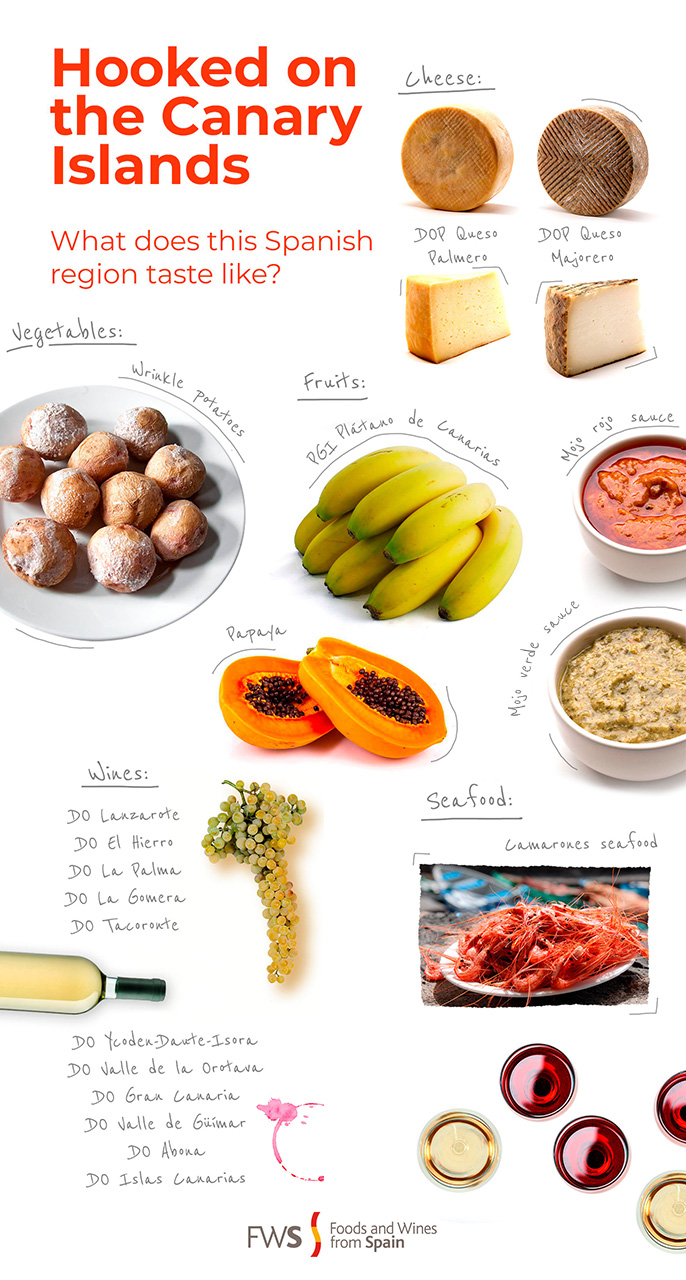.png.transform/rendition-xs/image_image%20(1).png)
Infographics: What Do The Canary Islands Taste Like?
The Canary Islands are a true paradise, and not just for their weather, scenery, beaches and historical legacy. They also have a delicious culinary repertoire. Shall we discover it together?

The climate in the Canary Islands has a profound impact on the beautiful Spanish islands' gastronomic tradition. Their most unusual characteristic is having an average temperature of 22º all year round, as well as being home to diverse landscapes, some with considerable rain and others which are dryer. That's the Canary Islands: varied and diverse, just like their most traditional foods.
The Canary Islands are synonymous with bananas (Plátanos de Canarias), which are much more flavorful than those that come from Central America or Africa. They're also home to tropical fruit like pineapples and papayas. And many foodies aren't even aware that the Islands are a major producer of delicious cheeses, such as Majorero from Fuerteventura Island, and Palmero from the island of La Palma.
This archipelago is a treasure of biodiversity, as visible in the large number of autochthonous potato varieties that are still preserved today, many of them used in the Canary Islands' most famous dish: wrinkled potatoes with mojo sauce. Mojo is a type of natural sauce in the Canary Islands with a very unique flavor; the most well-known are green mojo and mojo picón.
Unsurprisingly, fish and seafood are also part of the local gastronomy and are generally prepared simply, over the grill. Fish is often seasoned with sea salt made on the Islands, such as Fuencaliente fleur de sel, produced on La Palma island.
And the wines, the wines! The diversity of wines is incredible, as is the range of native varieties made in the Islands' DOs:
DO Lanzarote
DO El Hierro
DO La Palma
DO La Gomera
DO Tacoronte-Acentejo
DO Ycoden-Daute-Isora
DO Valle de la Orotava
DO Gran Canaria
DO Valle de Güímar
DO Abona
DO Islas Canarias
Text: Rodrigo García Fernández
Translation: Samara Kamenecka

